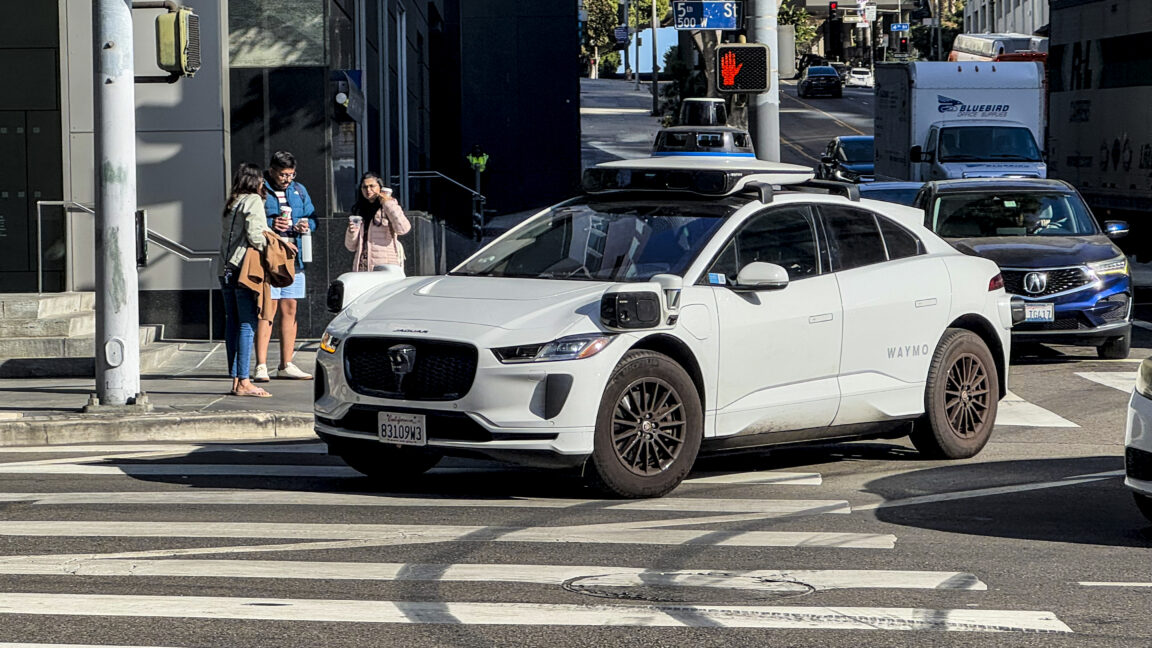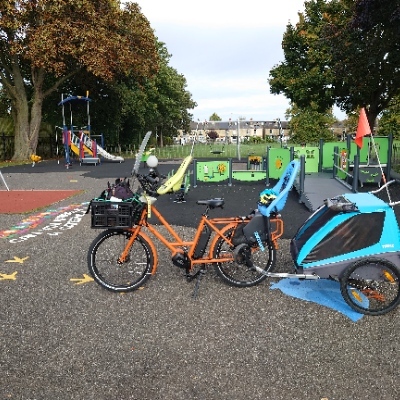- cross-posted to:
- [email protected]
- cross-posted to:
- [email protected]
Considering the sort of driving issues and code violations I see on a daily basis, the standards for human drivers need raising. The issue is more lax humans than it is amazing robots.
“You don’t have to be faster than the bear, you just have to be faster than the other guy”
:Looks at entire midwest and southern usa:
The bar is so low in these regions you need diamond drilling bits to go lower.
What’s a zipper merge?
Screams in Midwestern
I have spent many years in both the midwest and the south.
In some areas of the south, people drive extremely aggressively and there are lots of issues with compliance to various traffic laws but it is usually not difficult to get over if you need to. People will let you in. The zipper merge is a well-honed machine and almost everyone uses it and obeys it.
In the midwest, drivers tend to me more docile, cautious, and lawful overall but have an extreme sense of entitlement over their place in line. “How dare that person use that completely empty lane to get ahead of me! Can they not see there is a line!” They will absolutely not let you in. It does not matter if the zipper merge would improve traffic flow. It just is not going to happen.
it’s hard to change humans. It’s easy to roll out a firmware update.
Raising the standards would result in 20-50% of the worst drivers being forced to do something else. If our infrastructure wasn’t so car-centric, that would be perfectly fine.
“After 6 miles, Teslas crash a lot more than human drivers.”
I hate felon musk but I honestly believe their self driving tech is safer than humans.
Have you seen the average human? They’re beyond dumb. If they’re in cars it’s like the majority of htem are just staring at their cell phones.
I don’t think self driving tech works in all circumstances, but I bet it is already much better than humans at most driving, especially highway driving.
I think the fair comparison would be humans that drive legally.
Idiots that drive high or drunk or without prescription glasses or whatever, shouldn’t count as “normal” human driving.
In the same way a self driving car can have issues that will make it illegal.The problem is that legal self driving Tesla is not as safe as a legal person. I sees poorly at night, it gets confused in situations people handle routinely. And Tesla is infamous for not stopping when the road is blocked from 1m and up, and for breaking without reason. I’ve seen videos where they demonstrated an unnecessary break every ½ hour!! Where a large part was the German Autobahn, which is probably some of the easiest driving in the world!!
I think the fair comparison would be humans that drive legally.
Humans don’t drive legally. I don’t believe for a second there is a human on this planet who has never violated a rule of the road. The easy default is that we all speed.
Who hasn’t done a rolling stop at a stop sign? Taken a turn they legally shouldn’t have? (No U turns? lol) Taken a right on red when it says not to but there’s literally nobody around?
Cell phones are mostly illegal everywhere while driving and if you look around almost everyone is staring at them.
This mythical person who never, ever does anything against the rules is impossible.
And Tesla is infamous … for breaking without reason.
No notes!
We discussed the test here on Lemmy a few days ago. It was a German 6 hour test.
I can’t find the video that was debated, but you can’t be serious about not knowing about this issue?!?!?
It’s a years old issue that is still not fixed!!! It’s commonly known as Phantom breaking. AKA breaking without reason.https://www.carscoops.com/2025/02/german-court-finds-teslas-autopilot-defective-after-lawsuit/
The way I edited the quote, it was just a like joke about braking vs breaking.
Like I could make a pedantic reply about spelling, but no teslas in fact brake unexpectedly AND break unexpectedly. So, no notes!
Ah OK didn’t notice that. English is 2nd language.
Bro I saw a video of their car drive through a wall and hand the controls back to the driver. No, it absolutely is not.
When was the last time you saw a “wall” erected on a freeway that was perfectly painted to mimic the current time of day, road, weather, etc. I’m not talking about for that example, i’m talking about in the real world.
The answer is never.
Yes, the optical sensors are fooled by an elaborate ruse that doesn’t exist in real world operating conditions on a highway.
I still argue that for most normal driving circumstances, it is massively safer than humans who malfunction constantly.
I will never, ever buy a tesla so long as felon musk has any ownership in it whatsoever. The guy is irredeemable. Still have way more faith in self driving tech overall (industry wide) than human drivers though. That’s the work of engineers, not an asshole.
I honestly believe their self driving tech is safer than humans.
That’s how it should be. Unfortunately, one of the main decision maker on tesla’s self driving software is doing their best to make it perform worse and worse every time it gets an update.
Human drivers have an extremely long tail of idiocy. Most people are good (or at least appropriately cautious) drivers, but there is a very small percentage of people who are extremely aggressive and reckless. The fact that self driving tech is never emotional, reckless or impaired pretty much guarantees that it will always statistically beat humans, even in somewhat basic forms.
It’s all about the whole dunning-kruger effect where most just know nothing despite thinking otherwise, right?
Your username is a lie huh?
So only drive 5 miles. I guess that’s good advice in general
No shit. The bar is low. Humans suck at driving. People love to throw FUD at automated driving, and it’s far from perfect, but the more we delay adoption the more lives are lost. Anti-automation on the roads is up there with anti-vaccine mentality in my mind. Fear and the incorrect assumption that “I’m not the problem, I’m a really good driver,” mentality will inevitably delay automation unnecessarily for years.
It’d probably be better to put a lot of the R&D money into improving and reinforcing public transport systems. Taking cars off the road and separating cars from pedestrians makes a bigger difference than automating driving.
In my country at least (US) that’s just not going to happen.
WVU has a tram system called the “PRT”. It’s semi-automated cars on a track around campus and downtown. It’s not great, but goddamn does it handle a large school population just fine. Very high throughput, and it keeps congestion down. … as down as you can be with such a high density town.
That, and the inevitable bureaucratic nightmare that awaits for standardising across makes and updating the infrastructure.
Car infrastructure was a mistake. Automation isn’t the solution, it’s less cars and car-based spaces.
Why not both? We can automate the trains (more), the busses, and the occasional rural drive.
Sure that’s great, but read the room. It’s like advocating for gun legislation in the US, it can only go so far realistically. The vast majority of US cities are built around automotive infrastructure and the culture is very much anti-public transport. That requires heavy government level buy in. Car automation can be driven primarily by industry. One can happen in a major way in a few years, the other will take decades if it happens at all. Personally I’m all for it, but it’s such a different discussion that it just comes across as distracting when talking about very real delays in car automation and it’s not a valid criticism of moving forward and promoting decreased barriers to fully automated vehicle infrastructure.
The rural drive is the fun one, though…
Automation also can be abused, which I’m very very cautious about.
I believe it, but they also only drive specific routes.
Because they are driving under near ideal conditions, in areas that are completely mapped out, and guided away from roadworks and avoiding “confusing” crosses, and other traffic situations like unmarked roads, that humans deal with routinely without problem.
And in a situation they can’t handle, they just stop and call and wait for a human driver to get them going again, disregarding if they are blocking traffic.I’m not blaming Waymo for doing it as safe as they can, that’s great IMO.
But don̈́t make it sound like they drive better than humans yet. There is still some ways to go.What’s really obnoxious is that Elon Musk claimed this would be 100% ready by 2017. Full self driving, across America, day and night, safer than a human. I have zero expectation that Tesla RoboTaxi will arrive this summer as promised.
I think “near ideal conditions” is a huge exaggeration. The situations Waymo avoids are a small fraction of the total mileage driven by Waymo vehicles or the humans they’re being compared with. It’s like you’re saying a football team’s stats are grossly wrong if they don’t include punt returns.
You’re not wrong, but arguably that doesn’t invalidate the point, they do drive better than humans because they’re so much better at judging their own limitations.
If human drivers refused to enter dangerous intersections, stopped every time things started yup look dangerous, and handed off to a specialist to handle problems, driving might not produce the mountain of corpses it does today.
That said, you’re of course correct that they still have a long way to go in technical driving ability and handling of adverse conditions, but it’s interesting to consider that simple policy effectively enforced is enough to cancel out all the advantages that human drivers currently still have.
You are completely ignoring the under ideal circumstances part.
They can’t drive at night AFAIK, they can’t drive outside the area that is meticulously mapped out.
And even then, they often require human intervention.If you asked a professional driver to do the exact same thing, I’m pretty sure that driver would have way better accident record than average humans too.
Seems to me you are missing the point I tried to make. And is drawing a false conclusion based on comparing apples to oranges.
I specifically didn’t ignore that. My entire point was that a driver that refuses to drive under anything except “ideal circumstances” is still a safer driver.
I am aware that if we banned driving at night to get the same benefit for everyone, it wouldn’t go very well, but that doesn’t really change the safety, only the practicality.
Waymo can absolutely drive at night, I’ve seen them do it. They rely heavily on LIDAR, so the time of day makes no difference to them.
And apparently they only disengage and need human assistance every 17,000 miles, on average. Contrast that to something like Tesla’s “Full Self Driving” (ignoring the controversy over whether it counts or not), where the most generous numbers I could find for it are a disengagement every 71 city miles, on average, or every 245 city miles for a “critical disengagement.”
You are correct in that Waymo is heavily geofenced, and that’s pretty annoying sometimes. I tried to ride one in Phoenix last year, but couldn’t get it to pick me up from the park I was visiting because I was just on the edge of their area. I suspect they would likely do fine if they went outside of their zones, but they really want to make sure they’re going to be successful so they’re deliberately slow-rolling where the service is available.
Waymo can absolutely drive at night
True I just checked it up, my information was outdated.
driving might not produce the mountain of corpses it does today.
And people wouldn’t be able to drive anywhere. Which could very well be a good thing, but still
True enough, it would not be a wise economic or political move
I have zero expectation that Tesla RoboTaxi will arrive this summer as promised.
RoboTaxis will also have to “navigate” the Fashla hate. Not many will be eager to risk their lives with them
Evolution took a billion years too, so it’s kinda fair to say “well, vehicles need some training”.
Why are we still doing this? Just fucking invest in mass transit like metro, buses and metrobuses. Jesus
Also, Note that this is based on waymo’s own assumptions, that’s like believing a 5070 gives you 4090 performance…
deleted by creator
So we can have autonomous metros, buses and taxis that allow people anywhere when they need it so they don’t rely on having a car?
There’s already an autonomous metro.
Where? I haven’t heard of any rail lines that don’t have a human operator onboard or somewhere in the loop?
Budapest line M4 is fully automated, stations have some personnel but otherwise you can get on a train and look out straight ahead through the window, there is no cab.
Trains drive themselves, but I imagine there must be some switchboard type of thing somewhere.
I was on the newly opened Thessaloniki (Greece) subway line and it was autonomous.
i.e. Every single line in Copenhagen.
Now let’s do intercity trains and tramways then
That doesn’t solve the last mile problem, or transport for all the people who live outside of a few dense cities.
Frankly the best solution i have seen is always a combination of things. At least in the city I live in, people can take bikes on buses and trains, many people walk, and for trips that require trunk space (e.g furniture, DIY supplies etc) there is a Car sharing service that is cheaper than owning a car, or using ride share / taxi.
I don’t think waymo is a better option than a combination of what’s above, I think it can perhaps compliment it but it should not be the sole last-kilometre solution.
I would like to see waymo-like tech provide better public transit for the disabled. As of now, people in my city with disabilities can book special routes which are serviced by specialized buses/ taxis, and existing lines are all wheelchair accessible as well.
Self driving cars give the opportunity for those people to have even more freedom in booking, since as of now they can’t do last minute booking for the custom routes. It wouldn’t really create a traffic problem and massively would increase quality of life for those who are sadly disadvantages in society
Yes it does, if done properly. I have stops for four bus lines within walking distance. During peak hours, buses come once every 15 minutes. Trolleys in the city centre, every 10 minutes. Trams, every two minutes, and always packed. Most of the surrounding villages have bus stops. A lack of perspective is not an excuse.
Public transport (with acceptable intervals) is only (practically) feasible in densely populated areas, like cities and maybe the immediate surroundings. There’s no chance every tiny village in the middle of bumfuck nowhere is gonna have even a resemblance of acceptable public transport. You’d need a driver to drive around all day where most trips are completely or mostly empty.
It’s better to have a few self driving cars that are safer than everyone owning their own car. It’s like getting gas guzzling vehicles off the road: better to replace a humvee with a sedan than a sedan with an electric.
Good thing we basically got rid of sedans in favor of “light truck” SUVs…
I live on a 40mph road with no sidewalk or shoulder. That is connected to a 45mph road with no sidewalk or shoulder. My nearest bus stop is 3.2 miles away.
I’m not even that far out, I can drive to a major city downtown in 30 minutes.
That’s great that you have all this infrastructure around you, but not everyone does. Like you said, a lack of perspective is not an excuse.
That’s not out of necessity. It’s a design decision. You could have one nearby with the right elected officials and public effort. You also chose where to live, with the ability to know where existing stops are. If you chose the live away from a bus stop or other public transport then that’s on you.
So fuck everyone who can’t afford to, or doesn’t want to, live in the city?
I can, do, and will vote for officials that want to expand public transit. I also appreciate other efforts being taken, because I don’t let perfect be the enemy of the good, and I recognize that no one solution works for everyone.
So fuck everyone who can’t afford to, or doesn’t want to, live in the city?
What the hell? Were did you pull that from my comment?
We need to work to improve public transport everywhere. Switzerland can have timely consistent trains to tiny villages in the fucking alps. We can have it here. We need to push for it though.
People saying “it doesn’t work for me right now so shut up” are actively harmful to the discussion. They’re choosing to be in a position where it doesn’t work at all (though it doesn’t work well for almost anyone in America outside of DC and NYC). I’m not saying “fuck them” I’m saying “your opinion is not relevant if it’s only complaining about doing better because it’s bad for you right now.”
Its like saying we shouldn’t go to the moon because it’s hard right now, or we shouldn’t try to develop nuclear fusion technology because it’s hard right now. I don’t care if it’s hard right now. We’re discussing what could/should be.
Here’s a summary of this thread:
Guy 1 - why is anyone doing waymo when there’s public transit
Guy 2 - last mile problem
Guy 3 - it works great for me in the city surrounded by bus stops, no last mile problem
Me - it doesn’t work great for me barely outside the city. (My point being that it’ll take a lot to get public transit to within 1 mile of where I am, let alone to someone even further from the city)
You - that’s your own fault so stop complaining
Me - so fuck me and everyone farther out than me apparently.
That’s how we got here. I simply stated my situation as it relates to public transit, and you tell me it’s just my own fault and I should shut up.
We have a long way to go to get ubiquitous public transit in America. I doubt we will ever get there. It makes sense to consider other options as well.
I’m saying we should go to the moon AND develop nuclear fusion.
You want to know what’s harmful to discussion? Pricks like you telling people that their opinion is irrelevant.
ROFL ya because taking 5 separate buses to get to work is TOTALLY going to encourage people to get rid of their cars.
Fucking brilliant.
Oh ya and I TOTALLY want to give up my car just so I can be forced to sit next to rude assholes coughing in my face.
These brilliant suggestions are amazing.
Jesus. Ten of the hottest years ever recorded were the last ten. Its time for some major changes. If more people rode public transport it would be better.
All your objections seem to be about how inconvenient it would be for you. Sound kinda self-centered. Act like the only way to get by is to continue to conspicuously consume everything. Get a fuckin grip.
Edited with less profanity and name calling
Fella it isn’t me you need to convince. It’s the billions of other people on the planet you need to convince.
If you think you can force the entire world then by all means and try.
And also clearly you. As you seem to have decided you won’t participate until every single one of the other billions do.
Pretty much. I’m not trashing my life and living in the slums while the rest of the world doesn’t care.
If the world wants more from me then they can step up too.
You do realize that if we invest in more mass transit, then the people who want to take the bus will. That means fewer cars on the road and less traffic that you have to deal with. If you like driving your car and the freedom it gives you, advocating for more mass transit is in your favor. Imagine your commute with 90% less traffic. Doesn’t that sound appealing to you? Dedicated bus lanes that keep the slow busses out of your lane, doesn’t that sound appealing to you? I don’t know about you, but I love driving, and to me, that sounds like an absolute win
5 separate buses
Holy hyperbole, Batman!
To get to work 25 miles away, it takes 2 trains (commuter and light rail) and a bus. I personally don’t take transit though, not because of the other passengers, but because of how infrequent those lines run, which turns what should be an hour commute into two, each way.
I have zero problem with transit and I actually alternated between cycling and the bus to my last job based on weather, which took a out 40 min regardless of method of transport (about 10 miles away, two buses).
I can get to most popular destinations in my area with about 3 transfers, and the most popular ones would be one transfer (commuter train to light rail). The main limiting factor is ridership and feeder lines. I even have a rail line that goes right through my suburban city (and a bunch of others) that connects to light rail lines, but that extension keeps getting delayed. If they built the line, it would shave an hour off my transit commute and connect me to multiple destinations (two pro stadiums and downtown), but no, we get wider highways instead, and still have terrible traffic (sometimes it’s slower than the 2 trains + bus that takes 2 hours).
Well if YOU have a bus stop near you then everyone must! That’s just science!
Uh, yes, actually. I know someone like you can’t even fathom the possibility of a public transit system being well-built because you’ve been gaslit into believing that whatever happens in The West is the best humanity can offer, but we’ve got 80 bus and trolley lines criss-crossing the city. As a guesstimate, three quarters of the city is within a 10-minute walk from a stop, and the elderly and disabled who can’t walk benefit from the resulting reduction in traffic.
And all the world is cities! There’s noooooooooo other type of living. Your egocentric view of the world is going to carry you really far.
Public transport can, and does work in rural areas too.
Did you hallucinate that I said anything like it or something? Obviously not every situation is solved by the same concept. Dense city centres – sidewalks, bike paths, trams, human-scale infrastructure. Suburban areas – abolish Euclidean zoning, European-style grid streets, buses, local light rail services. Inter-city transit – high-speed rail. Smaller villages and towns – regional rail. It’s an issue that most of the developed world has solved.
Public transit is not supposed to replace cars altogether, but give people another choice. A transit system that is built well, operated well, and cheap, will reduce the reliance on cars, and make the streets safer for people or services that have to use cars.
If you build it they will come
Because having a bus to pick up 7 people in a day is really efficient economically and environmentally…
For sure. Just cruising around the countryside on the off chance that someone actually needs the bus that day. They haven’t for the past few but they have to go shopping eventually.
Much more so than having a car-centric infrastructure. If you start cherry-picking you’ll of course find cases where a car would have been more efficient but public transportation needs to be understood as a whole.
I’m not cherry picking Im just telling you my personal experience and the town I live in
Yeah, all three of them.
“most of the surrounding villages”
Why are we still doing this?
Because there’s a lot of money in it. 10.3% of the US workforce works in transportation and warehousing. Trucking alone is the #4 spot in that sector (1.2 million jobs in heavy trucks and trailers). Couriers and delivery also ranks highly.
The self-driving vehicles are targeting whole markets and the value of the industry is hard to underestimate. And yes, even transit is being targeted (and being implemented; see South Korea’s A21 line). There’s a lot of crossover with trucking and buses, not to mention that 42% of transit drivers are 55+ in age. Hiring for metro drivers is insanely hard right now.
Taking waymo’s numbers at face value they are almost 20x more dangerous than a professional truck driver in the EU. This is a personal convenience thing for wealthy people, that’s it. Fucking over jarvis and Mahmood so we can have fleets of automated ubers…
It’s nonsensical to compare protected highway miles with surface city street miles.
Uber had a net income of 9.86 billion dollars and spent 7.14 billion in operations in 2024. That’s a single transportation company. Do you really think Uber or anyone else is going to ignore researching the technology that could significantly reduce their billions in operations costs?
I’m also not so sure that Europe is 20x safer than the US. A quick search pulled up the International Transport Form’s Road Safety Annual Report 2023 and their data disagrees. The US, even with its really poor showing in the general numbers, is safer than Poland and Czechia (Road fatalities per billion vehicle‑kilometres, 2021). I could see an argument for a 2x gap of Europe outdoing the US, but a 20x? Citation needed.
They’re not saying general road safety is 20x better. They’re comparing an automated car ONLY on surface streets with lights, intersections, pedestrians, dogs, left turns, etc… to a professional truck driver mostly on highway miles.
That’s fair. Comparing regular drivers doing typical city trips to commercial big rigs is a bit apples-and-oranges. I wonder how CDL data would compare when the self-driving semi-trucks start putting on miles. Aurora is about to launch in that exact space.
I’m honestly more scared of that. Professional CDL drivers are WAY better at driving than other people. But their trucks are way more dangerous and harder to handle. So putting driverless tech in that is going to be harder and more dangerous.
Why sell $2 light rail fares when you can sell $40 Waymo fares? Now you’re thinking with capitalism!
people in america don’t want to ride with public transport because they’re incredibly isolationistic and have a fear of other human beings; so they prefer to drive within “their own 4 walls”, in their own chassis. It’s really about psychology much more than practical feasibility.
And yet it’s still the least efficient mode of transport.
What’s more efficient?
In terms of getting to an exact location.
Public transportation only can get you near your target mostly. Not on point like a car, bike etc.
If someone can’t walk a few blocks, that’s on them. Airplanes don’t get you exactly to the destination either. There’s a tradeoff.
E: For all the “What about the elderly or disabled?” If they can’t walk a few blocks and also can’t afford a car or taxi/Uber, what should they do? Mobility devices exist. Handicap accessible buildings are federally required. Your argument is merely a thought terminating interruption. That problem can easily be addressed.
Rip disabled people.
@meco03211 @Jayk0b cars can’t either - it’s a false premise. Not everything is drive-thru. How far is, say, the bakery section from your car when you go to the supermarket?
Yeah fuck disabled and elderly people.
Public transportation and walkable cities are much better for the elderly and disabled who often can’t drive due to their age and disability?
Taking a wheel chair or mobility scooter or be guided by your service dog are all subsets of “walk there”.
You ever heard of legs? Mass transit gets you the bulk of the way there, and legs will handle the small bit left.
In terms of getting to an exact location, the most efficient is no vehicle, walking.
Cars are less efficient, followed by busses, then probably trains, then boats, then airplanes (unless you parachute).
Cars are the least efficient in terms of moving large numbers of people from places they can then walk from.
The most efficient is obviously a combination of methods, using the fastest methods for each leg of the journey.
In the US, right now, taking a car from point to point, then walking into your location is the fastest combination in most cases.
It is hard to take you seriously. Open up Google Maps in the USA, and see how long it takes you to walk, and bike to a place. People buy the expense of a car for a reason; biking, and walking, is the least efficient. Transit systems do not work in the US, because everything has to be planned around them. They’re bureaucratic, and rote. City transit systems are the essence of this bureaucracy and rote. It does not serve people as they intend to live.
Good transit gets you close enough (as others have said, you don’t drive your car down the aisles of the supermarket). That few people have good transit is the problem that needs to be fixed. Sadly few really care - in the US the republicans hate transit, and the democrats only like transit for the union labor is employees - importantly neither cares about getting people places.
Bicycles? ride/ walk to were you need to be? Why do you need to be driven to an exact point? All the space needed for parking is just wasted.
You need to create a specific scenario in order to make cars seem more efficient than alternatives. They cause more accidents, take up more space while carrying fewer people at any given time while also causing more pollution than other modes of transport.
Automated vehicles are GPS guided. The US is too big to be walking and biking. That is for an urban environment with proper zoning laws, proper planning, and serves what amounts to be an ethnic group who shouldn’t need cars. What makes automated vehicles more efficient is the removal of labor and lower operational costs. The specialization of transporting people to the exact GPS coordinates is much more convenient. The future is automated travel because vehicles can be used more productively on the margin than everybody having to own their own car. Fewer cars, higher use of the car, or less idling, means lower transportation costs throughout, which includes infrastructure itself; the less need for insurance, less pollution, etc. This technology can be used in bus transit but in a potentially dynamic way.
lol
The “US is too big” is such a bullshit excuse since cars are absolutely crap for long distances compared to trains people already walk and cycle in the US. And why is the richest and most powerful (for now at least) country in the world unable to fix it’s zoning laws? Especially since other countries seem to be able to do it.
Yes, efficiency in reducing the amount of people with jobs but not by getting people from a to b. What is convenient is not having to own a car in the first place and be able to get around with ease because of proper urban planning.
The future is automated travel because vehicles can be used more productively on the margin than everybody having to own their own car. Fewer cars, higher use of the car, or less idling, means lower transportation costs throughout, which includes infrastructure itself; the less need for insurance, less pollution, etc. This technology can be used in bus transit systems as well for a less marginal benefit.
Sooo like a what’s already possible with trains and trams? And buses on dedicated lanes would be far easier to automate and be more efficient than cars.
Trains are for long distances. Trams are for pure urban areas. Metros are for connecting cities within a metropolitan group. All those function within a well planned urban structure, not the suburbs, or exurbs. Cars are the most efficient in the US. That is why most Americans own a car. Without a car, you are asking for long walking distances, and long bike rides. City transit systems don’t work in the US, because too many criminals are out in public, people like their own space, and Americans like the convenience of going, and leaving at their own time. Americans like their own space. Again, you are talking about a specific type of living that most Americans don’t really gravitate to. Americans want a large house in a safe neighborhood in the suburbs, or live in the exurbs. They don’t want to live in crime-ridden urban areas, that is not the American dream.
Look how well that American dream is going
How are they with parking lots, tho’?
They work great in parking lots.
Source: Ridden in several Waymos
Genuinely a relief to hear, thank you!
Or yielding to emergency vehicles.
I think “veritasium” or what the yt channel is called made a video about those.
It did manage to bring him to a store with a big parking lot, it did it.
As snarky as my initial comment may sound (even to me, I have by-proxy distrust of contemporary models due to their knobhead owners), I’m genuinely glad to hear they figured that one out! At least there’s less danger for everyone around, at the VERY least.
Just fine the one time I rode in one. It had a problem with a moving truck blocking the entire street, where it sat trying to wait to see if the moving truck was just stopped and going to move or if it was parked for good. The Waymo executed a 3 point turn and then had two construction trucks pull into the street the other direction, and they refused to back up. So the Waymo was stuck between not going forward and not going back… it just pulled forward toward the trucks and then reversed toward the moving truck. Back and forth. Then I yelled out the window for the fucking trucks to move out of the fucking road, which they couldn’t drive down anyway. After that it was smooth, even getting into the parking lot.
My buddy said at his office the Waymos have an issue with pulling too far forward at the pick up spots, which makes it impossible for cars to go around them, but humans do dumb shit like that, too.
Yyyep, that sounds pretty standard fare (no pun intended), I’ve lived mostly in abstract neighborhoods in terms of infrastructure and had to chase rides in a grand majority of cases.
Plus, honestly, even the way it handled the construction jam sounds acceptable, reminds me of my first days of learning to drive. As long as they stop and stay stopped, that’s way better than deciding to ignore the sensor data and just go for it, like… some other models…
What’s tricky is figuring out the appropriate human baseline, since human drivers don’t necessarily report every crash.
Also, I think it’s worth discussing whether to include in the baseline certain driver assistance technologies, like automated braking, blind spot warnings, other warnings/visualizations of surrounding objects, cars, bikes, or pedestrians, etc. Throw in other things like traction control, antilock brakes, etc.
There are ways to make human driving safer without fully automating the driving, so it may not be appropriate to compare fully automated driving with fully manual driving. Hybrid approaches might be safer today, but we don’t have the data to actually analyze that, as far as I can tell.
There’s a limit to what assist systems can do. Having the car and driver fighting for control actually makes everything far less safe.
That doesn’t seem like a very high bar to achieve
That’s what happens when you have a reasonable sensor suite with LIDAR, instead of trying to rely entirely on cameras like Tesla does.
And are limited to highly trained routes. There’s a reason you only see them in specific neighborhoods of specific cities.
At least the repair for a camera-only front is cheaper after the car crashes into a parked white bus
Tap for spoiler
/s
This would be more impressive if Waymos were fully self-driving. They aren’t. They depend on remote “navigators” to make many of their most critical decisions. Those “navigators” may or may not be directly controlling the car, but things do not work without them.
When we have automated cars that do not actually rely on human being we will have something to talk about.
It’s also worth noting that the human “navigators” are almost always poorly paid workers in third-world countries. The system will only scale if there are enough desperate poor people. Otherwise it quickly become too expensive.
i knew it that AI is just some guy in india responding to my queries.
AI - Actually Indian
Could a navigator run you over twice from different companies after they get fired from the first one?
If they have to do it a second time, they aren’t very good at it.
God, I hope so.
Sequel to snowcrash right there
I thought the human operators only step in when the emergency button is pressed or when the car gets stuck?
Do they actually get driven by people in normal operation?
The claim is that the remote operators do not actually drive the cars. However, they do routinely “assist” the system, not just step in when there’s an emergency.
I think they’ve got 1 person watching dozens of cars though, it’s not 1 per car like if there was human drivers.
@Curious_Canid @vegeta this is the case for the Amazon “just walk out” shops as well. Like Waymo they frame it as the humans “just doing the hard part” but who knows what “annotating” means in this context? And notably it’s clearly more expensive to run than they thought as they’ve decided to do Dash Carts instead which looks like it’s basically a portable self-service checkout. The customer does the checking. https://www.theverge.com/2024/4/17/24133029/amazon-just-walk-out-cashierless-ai-india
Back when I was a fabricator I made some of the critical components used in Amazon stores. Amazon was incredibly particular about every little detail, even on parts that didn’t call for tight tolerancing in any conceivable way. They, on several occasions, sent us one bad set of prints after another. Which we could only discover after completing a run of parts. We’re talking 20-30 thousand units that ended up being scrapped because of their shitty prints. Millions of dollars set on fire, basically.
They became such a huge pain in the ass to work with we eliminated every single SKU they ordered from us.
Ordering components with unnecessarily small tolerances is stupid and a waste of money but of course they will complain if you can’t make the parts to the specifications.
Why did you even take the order in the first place if you can’t manage to produce them to spec?
of course they will complain if you can’t make the parts to the specifications.
Why did you even take the order in the first place if you can’t manage to produce them to spec?
Where did they say anything about not being able to make the parts to spec?
We produced everything to spec and on time, thanks.
Why did you even take the order in the first place if you can’t manage to produce them to spec?
They were made to spec, but the specs were wrong.
Yeah we managed to just put the slave workers behind a further layer of obfuscation. Not just relegated to their own quarters or part of town but to a different city altogether or even continent.
Tech dreams have become about a complete lack of humanity.
I saw an article recently, I should remember where, about how modern “tech” seems to be focused on how to insert a profit-taking element between two existing components of a system that already works just fine without it.
Was it The Enshittification?
That’s called “rent-seeking behavior,” and it’s not new
Has anyone found the places where the navigators work to see how it goes? Has a navigator shared their experience on the web somewhere?
I am very curious as to what they are asked to do and for how many cars And for how much money
The system will only scale if there are enough desperate poor people. Otherwise it quickly become too expensive.
You can also get MMORPG players to do it for pennies per hour for in-game currency or membership. RuneScape players would gladly control 5 ‘autonomous’ cars if it meant that they could level up their farming level for free.
The game is basically designed to be an incredibly time consuming skinner box that takes minimal skill and effort in order to maximize membership fees.
Packaging the job as a video game side quest is genius. Make so the gamer has to do several simulated runs before they connect to an actual car, and give in-game expensive consequences for messing it up
It doesn’t even need to be a side quest, just a second screen activity lol
They’ll do it for pennies an hour for 12 hours a day.
“Damn, I’m sorry my car killed your kids. The Carscape person didn’t get their drop”
The human operators are there for when the AI gets softlocked in a situation where it doesn’t know what to do and just sits there, not for regular driving.
*human drivers remotely controlling cars crash less than humans directly controlling cars
But it’s not like that. There’s some kind of ML involved but also like they had to map put their entire service area, etc. If something goes wrong, a human has to come up and drive your driverless car lmao
Most trips require remote intervention by one of their employees at at least some point.
“Waymo reports that Waymo cars are the best”
“Waymo reports the statistical data it has, which happens to be pretty good.”
























